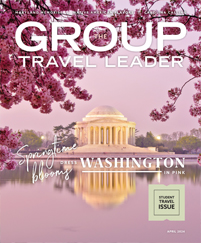It’s only early June, but in Blackwater National Wildlife Refuge, summer is in full swing. The sun is strong, the temperatures warm, and birds are everywhere. Before I’ve even passed the refuge’s gates, I’ve spotted a blue heron hanging out casually alongside the road, massive and with such intense yellow eyes I imagined he’d have been at home amongst the dinosaurs. As I head down Wildlife Drive, I spy an eagle soaring overhead and flocks of egrets the color of clouds standing sentinel in the wetlands. My heart beats faster with every avian sighting.
I’m not alone in my passion for birding. According to U.S. Fish and Wildlife’s 2016 National Survey of Fishing, Hunting and Wildlife-Associated Recreation, “more than 45 million people watch birds around their homes and away from home,” spending $41 billion on trips and equipment. Because birds of a feather do flock together, bird-watching makes for an especially great group activity, particularly at the following locations, renowned as some of the country’s best places to spot fine-feathered friends.
Blackwater Wildlife Refuge
Dorchester County, Maryland
More than 1,000 acres of woods, fields and streams make up Jacobsburg State Park in Pennsylvania. With equestrian outfitters Lehigh Valley Trail Rides, groups can enjoy a scenic and relaxing ride and take in the serene beauty of the park. More than 18 miles of trails wind through forest that displays the vibrant colors of fall. The outfitter uses natural horsemanship training techniques to ensure their horses are gentle and well mannered. What better way to take in the area’s natural beauty than atop a majestic horse?
Hawk Mountain Sanctuary
Kempton, Pennsylvania
Founded as a nonprofit in 1938, the Hawk Mountain Sanctuary, 35 minutes from Allentown, Pennsylvania, was the world’s first refuge for birds of prey. Today, it affords groups opportunities to see some 18,000 raptors soar past during fall migration. The season begins in August, which brings bald eagles, and continues into December. In between, broad-winged hawks, kestrels, ospreys, golden eagles, peregrine falcons and more pay the sanctuary a visit before heading south.
A variety of programs, including guided walks and raptor presentations, are available to groups.
Reservations should be made six to eight weeks in advance during peak times, like mid-September to mid-November, when it’s possible to see thousands of birds in a single day.
Cave Creek Canyon
Portal, Arizona
Cave Creek Canyon, which sits hidden in the Chiricahua Mountains, just may have the best birding not only in southwestern Arizona but also in the entire state, according to Michael Jacobi, caretaker of the Cave Creek Canyon Visitor Information Center.
“Cave Creek Canyon is one of the few places the elegant trogon, a Mexican species, breeds,” he said. “People come from around the world to see that one.” Also popular with birders is the blue-throated mountain gem, which Jacobi says is “the largest hummingbird in the United States. It lives here year-round.”
Birders have documented approximately 370 bird species in the rugged, isolated Cave Creek landscape, which large motorcoaches may have difficulty traversing. However, smaller groups will have no problem reaching the South Fork area, where trogons and more await.
Monterey County
California
Beautiful, well-heeled Monterey County, California, has a lot going for it, such as its reputation as a birders paradise, thanks to a profusion of wild spaces that provide ideal avian habitats. That includes Carmel’s Point Lobos State Reserve, where groups can find “everything from chestnut-backed chickadees to California quails and red-tailed hawks to snowy egrets,” according to Monterey County Convention and Visitors Bureau public relations manager Rachel Dinbokowitz. “Avian life at Pinnacles National Park in Salinas Valley also is astoundingly diverse,” she said, “with raptors, owls, warblers, woodpeckers and more.”
For groups looking to take to the water, boats tours are available at Elkhorn Slough National Estuarine Reserve in Moss Landing, home to more than 340 bird species. Naturalist-led tours can also be arranged for groups at Elkhorn Slough.
Grand Teton National Park
Moose, Wyoming
The breathtaking Grand Teton National Park in northwestern Wyoming features a 40-mile-long mountain range capped by the eponymous peak. Beneath it unspool lakes, glaciers, wetlands, forests, meadows, alpine tundra and more, providing an incredible diversity of habitat for the more than 330 species of birds that live there. They range from the calliope hummingbird, the smallest bird in North America, on up to the rare trumpeter swan, the largest waterfowl on the continent.
Groups in the park should keep an eye out for bald eagles, western tanagers and the great gray owl, the tallest owl in North America. Although any time of the year is rich with birds in the Tetons, be aware that winter weather may shutter some of the park’s roads and six ranger stations and visitors centers.
Acadia National Park
Bar Harbor, Maine
Boasting miles of spectacular coastline and deep, still forests, the 47,000-acre Acadia National Park is located mostly on Maine’s Mount Desert Island. Seabirds, including the common and Arctic tern and black guillemot, can be spotted there, but that’s not all that makes the park special.
“Acadia is a hot spot for migration because it’s located along the Atlantic flyway,” said Patrick Kark, interpretive ornithology ranger. “It’s possible to see more than 250 species here, including 21 species of warbler that breed in Acadia in the spring and summer.”
Kark recommends groups stop at Sieur de Monts Spring for great birding on easy walking trails groups will enjoy. He also notes that motorcoach tours are required to register for a Commercial Use Authorization permit. Note that after October 1, group tours will need a CUA to access every national park, as well as pay park-specific per-person entrance fees for each passenger.
Crane Trust Nature and Visitors Center
Grand Island, Nebraska
With almost 350 species recently tallied in the area, Grand Island, Nebraska, is a gateway to great birding year-round, giving groups peeks at everything from the meadowlark, Nebraska’s state bird, to the Harris sparrow. But the Platte River Valley, in which Grand Island sits, is most renowned for its epic spring sandhill crane migration, when a half-million of the red-masked birds descend on the area to feed and rest before continuing the trek north.
Compared by naturalists to the great wildlife migrations in Africa and the Antarctic, Grand Island’s sandhill crane migration can best be witnessed from the Crane Trust Nature and Visitor Center. The Crane Trust maintains blinds to watch the birds from, offering groups special guided sunrise and sunset tours to the blinds in early to mid-March.
Audubon Bird Sanctuary
Dauphin Island, Alabama
A 14-mile-long barrier island off the coast of Alabama, Dauphin Island is so crucial to birds that the National Audubon Society declared it a Globally Significant Important Bird Area. Every spring, neotropical birds make their first landfall on Dauphin after their harrowing journey across the Gulf of Mexico. If these migrants from the Yucatan hit inclement weather, group travelers might get to see a dramatic “fall-out,” when massive numbers of exhausted birds seem to nearly drop from the sky.
Roughly 420 species have been noted on Dauphin Island, but during spring migration the most popular species with birders tend to be the brightly-hued warblers, buntings and hummingbirds. Groups should visit the Audubon Bird Sanctuary, which offers, among other treats, a 1,000-foot boardwalk, excellent for travelers to amble along.










